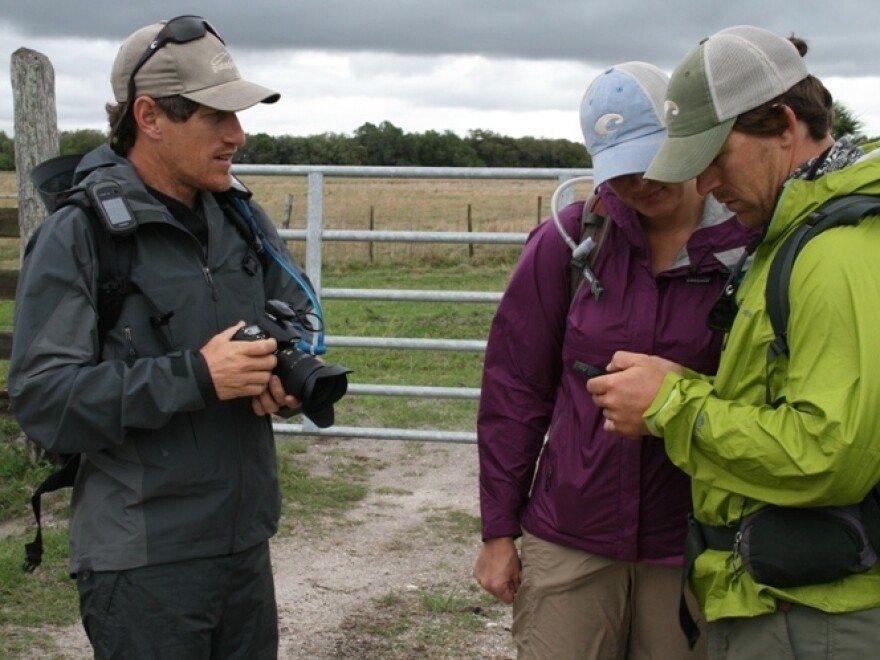Members of the Florida Wildlife Corridor Expedition sport calluses and legs hardened by three months of hiking through saw grass, palmetto stands and piney woods.
On Sunday, these four adventurers mark the end of a 1,000-mile trek across Florida, from the tip of the Everglades to the Okefenokee Swamp.
That might have been the easy part. Their next goal is to create a continuous corridor for wildlife running the length of the state. By documenting their journey, they hope to draw attention to the shrinking habitats and remind Floridians of their connection to the environment.
Passing Through Florida's Wild Spaces
One recent morning of their journey began at Hopkins Prairie Campground, deep in the Ocala National Forest, with the sounds of sandhill cranes taking flight. As the sun rose through the fog, Carlton Ward Jr. took it all in.
"I try not to miss a sunrise, if I can help it," he said.
Ward, the expedition leader, had his camera and was trying to get just that right shot .

"It's very rewarding, and very frustrating at the same time. Because in order to capture the essence of some of these places, it takes more than the few hours we have passing through," he said. "So I am getting a few good photographs. I'm also getting a pretty long list of places I want to revisit."
The team — expedition members Joe Guthrie, Elam Stoltzfus and Mallory Lykes Dimmitt — has seen a lot in the past few months. Ward recalled slogging for days through the heart of the Everglades on kayak.
"We pushed on into the night, so we had about two hours in the dark, following the line, kind of flying by instruments on the GPS," he said. "I ran over two alligators that nearly threw me out of my kayak. You couldn't quite tell what was coming around each corner."
A Natural Lifeline
Development in Florida is squeezing wildlife into increasingly narrow ribbons of green space.
Wildlife corridors, which connect wildlife habitats, have been proposed for states as different as California and New Jersey. There's even a transnational one planned to stretch from Yukon to Yellowstone.
But do they really help to heal fragmented landscapes?
"All the study that's been done so far has been typically at very small scales, and only looking at very short-term animal movement," says Paul Beier, a conservation biologist at Northern Arizona University.
"What's yet to be known is whether the longer corridors — on the scale of miles — will, over the long term, promote gene flow and allow things like animals to recolonize areas," he says.
What may be more practical, Beier says, is a system of shorter connections. They would allow wildlife to roam between parks and natural areas.
The Unknown Florida
Back in Ocala National Forest, Ward says half the battle is just educating Floridians on the ranches, swamps and beauty of natural Florida. With almost 19 million people mostly living on the coast, he says a connection with the state's interior is lost.
"At the same time, most of our water, wildlife and food come from this interior area," he says. "So it has tremendous importance to everyone living out along the coasts. But in many ways, it's still terra incognita in their minds."
Ward says publicizing that "unknown land" in the minds of the state's movers and shakers is their next mission.
9(MDAyNDY5ODMwMDEyMjg3NjMzMTE1ZjE2MA001))
Copyright 2012 WUSF Public Media - WUSF 89.7





